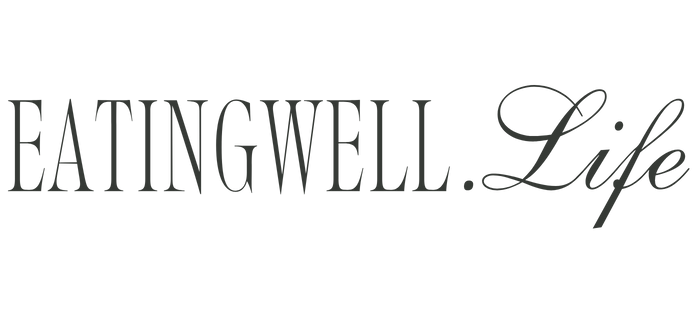
As the world becomes more and more health-conscious, the number of people looking to improve their diet has also increased. But where do you even begin?
If you’re new to healthy eating, or simply want a guide on how to start your own healthy eating plan, read on!
In this post, you’ll learn about what does healthy eating look like as well as how to develop a healthy diet on your own.
You’ll also find out about the importance of protein, carbohydrates, and other essential nutrients, as well as a sample meal plan that you can follow to get started.
So whether you’re looking for inspiration or want to create a healthy eating plan that’s tailored specifically for you, read on!
What Does Healthy Eating Look Like
There is no one-size-fits-all answer to the question “what healthy eating looks like?” However, there are a few key things to keep in mind when starting your own healthy eating plan.
The nutrients you need to maintain your body’s well-being and keep energy are found in healthy foods. The essential nutrients in a healthy, balanced diet are water, carbohydrates, fat, protein, vitamins, and minerals. (Read also: How to Eat Balanced Diet in a Day)
A healthy diet is composed of a variety of different foods and nutrients, so it’s important to explore all of your options. After all, there are many different types of diets out there, so finding one that works for you is the key to success.
If you’re looking for an easy starting point, try the Five A-Day Diet. This is a popular and simple diet that was created by WHO.
To lower the risk of serious health problems, such as heart disease, stroke, and certain forms of cancer, the 5 A Day initiative is based on recommendations from the World Health Organization (WHO). WHO recommends eating 400g of fruit and vegetables per day.
How to Start Your Own Healthy Eating Plan
Starting your own healthy eating plan can be a daunting task, but it’s definitely worth it in the long run. The first step is to set a goal for yourself. What are you hoping to achieve by starting a healthy eating plan?
Once you know your end goal, it’s time to create a list of foods that you’re allowed to eat. Make sure that you stick to this list regularly, and don’t calorie-count or track food intake. This can be confusing and discouraging.
So, how to start your own healthy eating plan? There is no one-size-fits-all answer to this question since everyone’s healthy eating plan will vary depending on their individual lifestyle and preferences.
However, here are some general tips that may help you start your own healthy eating plan:
- Start by scanning the food labels on your grocery store shelves to identify unhealthy foods. These might include foods high in sugar, fat, or cholesterol. Try to stick to whole grains, lean protein sources, and low-fat dairy products when shopping for groceries.
- Make mealtime choices that are heart-healthy by including plenty of fruits and vegetables at every meal. Try to avoid high-fat, processed foods and eat only moderate amounts of saturated fat.
- Take a look at your physical activity levels and make changes accordingly if needed. If you are not currently active, start by gradually increasing your activity levels until you reach the recommended level for your age group.
- Get enough water intake each day by drinking more fluids or adding healthy fruits and vegetables to your diet. Drinking plenty of water can help reduce calorie intake and maintain an ideal body weight.
What Foods Should be Included in a Healthy Diet
Starting your own healthy eating plan can be daunting, but it’s definitely worth it! A healthy diet includes a variety of foods from all food groups. This variety allows you to get the nutrients you need to stay active and healthy throughout the day.
What to look for when eating healthy? The good news is that eggs, dairy, meat, vegetables, and fruits are all important sources of protein and nutrients. In addition to protein, dairy, and meat, these foods also contain fiber, which is essential for a healthy digestive system.
Additionally, vegetables and fruits are essential for a balanced diet. They provide you with vitamins, minerals, and antioxidants that are essential for health.
Finally, a healthy eating plan is about choosing nutrient-rich foods that will give you the energy you need to stay active and healthy.
How Much Protein Do You Need Daily
There’s no one-size-fits-all answer to the question of what healthy eating looks like, but there are some basics that everyone needs to know. For starters, adults need approximately 56 grams of protein per day. This includes both animal-based protein and plant-based protein.
Some high-protein foods that are good for adults include chicken, fish, eggs, and Greek yogurt. If you’re not sure how much protein you should be consuming each day, speak with your doctor or nutritionist for guidance. They will be able to help you figure out the right amount for your specific health and dietary needs.
What About Carbohydrates
Starting your own healthy eating plan can be daunting, but it’s so worth it in the long run. That’s why we’ve put together this guide on what healthy eating looks like, and how to include carbohydrates into your diet.
Carbohydrates are a major source of energy for the body, and a healthy diet that includes them is key to maintaining energy levels and avoiding weight gain or obesity.
There are many different types of carbohydrates, so it’s important to choose ones that fit into your dietary preferences and lifestyle habits. In addition to being a source of energy, carbohydrates are also important for maintaining blood sugar levels and preventing chronic diseases like diabetes.
Sample Meal Plan for Beginning Healthy Dieters
Breakfast:
- A whole grain cereal with low sugar and fiber
- A banana or a piece of fruit
Lunch:
Sandwiches are made from lean protein, healthy vegetables, and whole grains. For example, turkey wrap with lettuce, tomato, avocado, and oats on whole wheat bread
Snack1: A small handful of fresh fruits or vegetable sticks dipped in low-fat yogurt
Snack2: Low-fat protein shake or low-fat yogurt
Dinner:
A healthy protein source such as grilled chicken, fish, or legumes cooked in olive oil or with whole grain rice.
For example, a Mexican black bean dish with whole wheat tortillas, diced tomatoes, and avocado on top It’s important to be mindful of the number of carbohydrates you consume each day.
Aim for around 50-60 grams per day, depending on your calorie needs. In addition to whole grains, there are a variety of low-carbohydrate foods such as fruits, vegetables, and legumes that can help make up part of a healthy diet.
It’s also important to get enough vitamins and minerals from food sources instead of supplements, since these nutrients are found in whole grains, fruits and vegetables too.
This sample meal plan provides a balanced approach to eating which can help maintain energy levels and prevent weight gain or obesity.
Conclusion
Thank you for reading! In this blog, we have outlined everything you need to know about starting your own healthy eating plan. From the foods that should be included to the amount of protein you need daily, we have covered it all.
We have also provided a sample meal plan for beginning healthy dieters to get you started. So, what are you waiting for? Start your healthy eating journey today by following our guide!

Leave a Reply